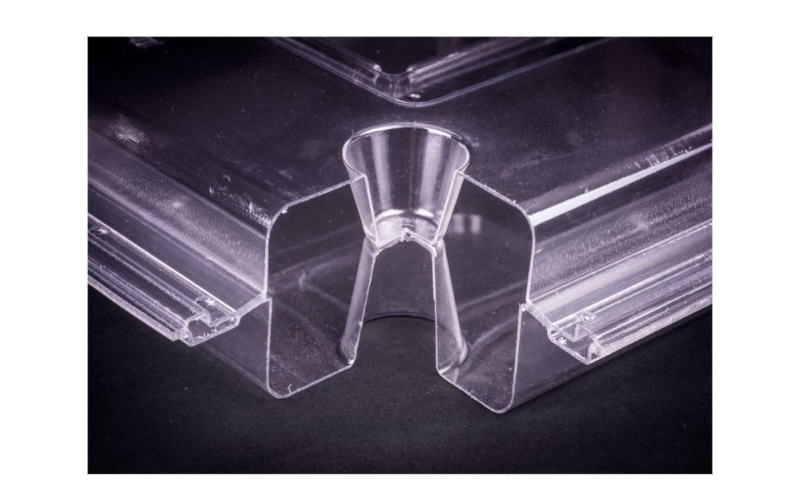Introduction
Twin sheet thermoforming is an advanced plastic forming process that combines the principles of thermoforming with innovative technology to produce hollow or double-walled plastic parts. This method involves heating two plastic sheets simultaneously and then molding them on separate molds. The sheets are then pressed together while still pliable to fuse at the edges and designated points, creating a robust, three-dimensional structure. This article explores the twin sheet thermoforming process in detail, its distinct advantages, challenges, and its widespread applications across various industries.
The Twin Sheet Thermoforming Process
Twin sheet thermoforming consists of several critical steps that distinguish it from other plastic forming methods:
- Material Selection: The process starts with the selection of suitable thermoplastic materials, which commonly include High Impact Polystyrene (HIPS), Polyethylene (PE), and Polypropylene (PP). Each material offers unique properties like impact resistance, flexibility, and chemical resistance, which are crucial for the intended application.
- Heating the Sheets: Two plastic sheets are heated simultaneously until they reach their forming temperature, where they become soft and moldable. Uniform heating is crucial to ensure consistent quality and avoid material degradation.
- Molding: Each heated sheet is then draped over or into its respective mold. These molds represent the two halves of the final product.
- Forming and Fusion: After molding, while the sheets are still hot and malleable, they are brought together in a press. At this stage, strategic points on the sheets are fused together by applying pressure, air, or ultrasonic welding techniques, depending on the material and product requirements.
- Cooling and Ejection: The fused part is allowed to cool and solidify in the mold, ensuring it retains its shape and structural integrity. Once cooled, the finished product is ejected from the mold.
- Trimming and Finishing: Any excess material is trimmed off, and additional post-processing such as drilling, cutting, or decorating is performed to prepare the part for its final use.
Advantages of Twin Sheet Thermoforming
Twin sheet thermoforming offers several compelling advantages:
- Structural Strength: The dual-layer construction enhances the structural integrity and impact resistance of the final product.
- Design Flexibility: This method allows for complex geometries and designs, including the integration of different functionalities within a single part, such as airflow channels or integrated hardware.
- Lightweight Products: Twin sheet thermoforming produces lightweight parts, crucial for industries where weight reduction is a priority, such as automotive and aerospace.
- Cost Efficiency: While more complex than single sheet forming, twin sheet thermoforming is often more economical than other dual-material processes, especially for large parts and moderate production volumes.
Challenges in Twin Sheet Thermoforming
Despite its benefits, twin sheet thermoforming presents unique challenges:
- Precision in Heating and Molding: Achieving uniform heating and precise control during the molding process is critical to prevent deformities and ensure a quality bond between the sheets.
- Mold Design and Maintenance: The molds used in twin sheet thermoforming are typically more complex and expensive than those used in single sheet forming, requiring high precision and maintenance.
- Cycle Time: The process may have longer cycle times compared to traditional single sheet thermoforming due to the complexity of handling and fusing two sheets.
Applications of Twin Sheet Thermoforming
The unique capabilities of twin sheet thermoforming make it suitable for a variety of applications:
- Automotive Industry: Used for producing lightweight yet strong parts such as car seats, door panels, and under-hood components.
- Material Handling: Creates durable and lightweight pallets and shipping containers that are easy to handle and stack.
- Recreational Products: Suitable for manufacturing kayaks, surfboards, and other sports equipment that benefit from hollow, lightweight constructions.
- Medical Devices: Used for making hollow, sterile enclosures for medical machines and equipment that require a high level of cleanliness and precision.
Conclusion
Twin sheet thermoforming is a versatile and effective manufacturing process that allows for the production of high-quality, lightweight, and structurally robust plastic parts. It bridges the gap between single sheet thermoforming and more expensive technologies like blow molding and rotational molding, providing manufacturers with a cost-effective solution for producing complex, hollow parts. As technology advances and the demand for high-performance, lightweight materials increases, twin sheet thermoforming is poised to expand its influence across more industries, further driving innovation in plastic manufacturing.

